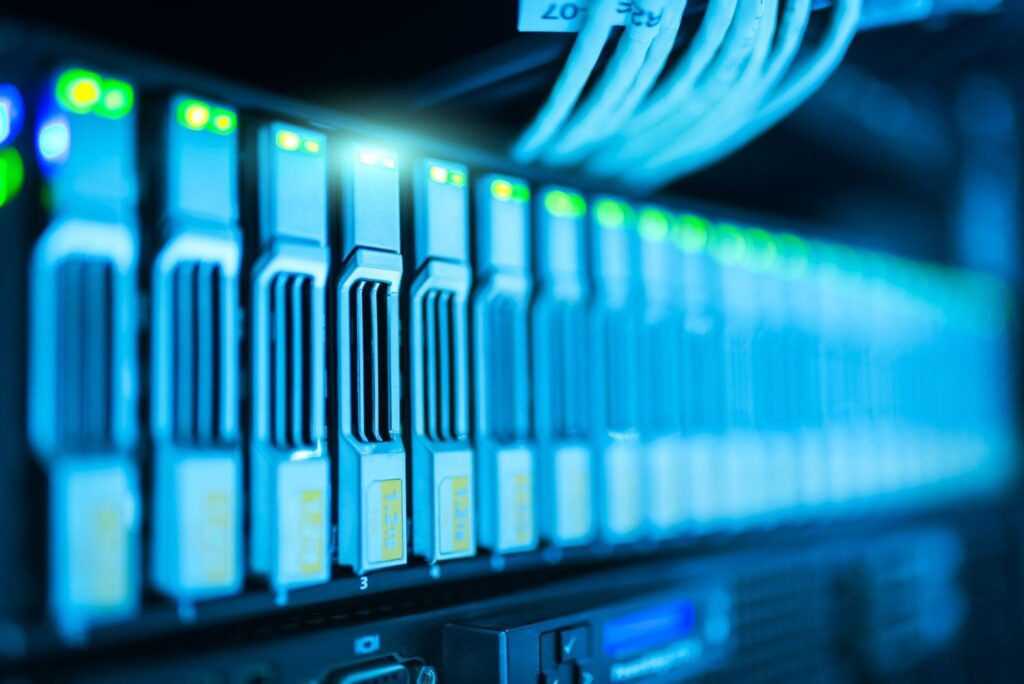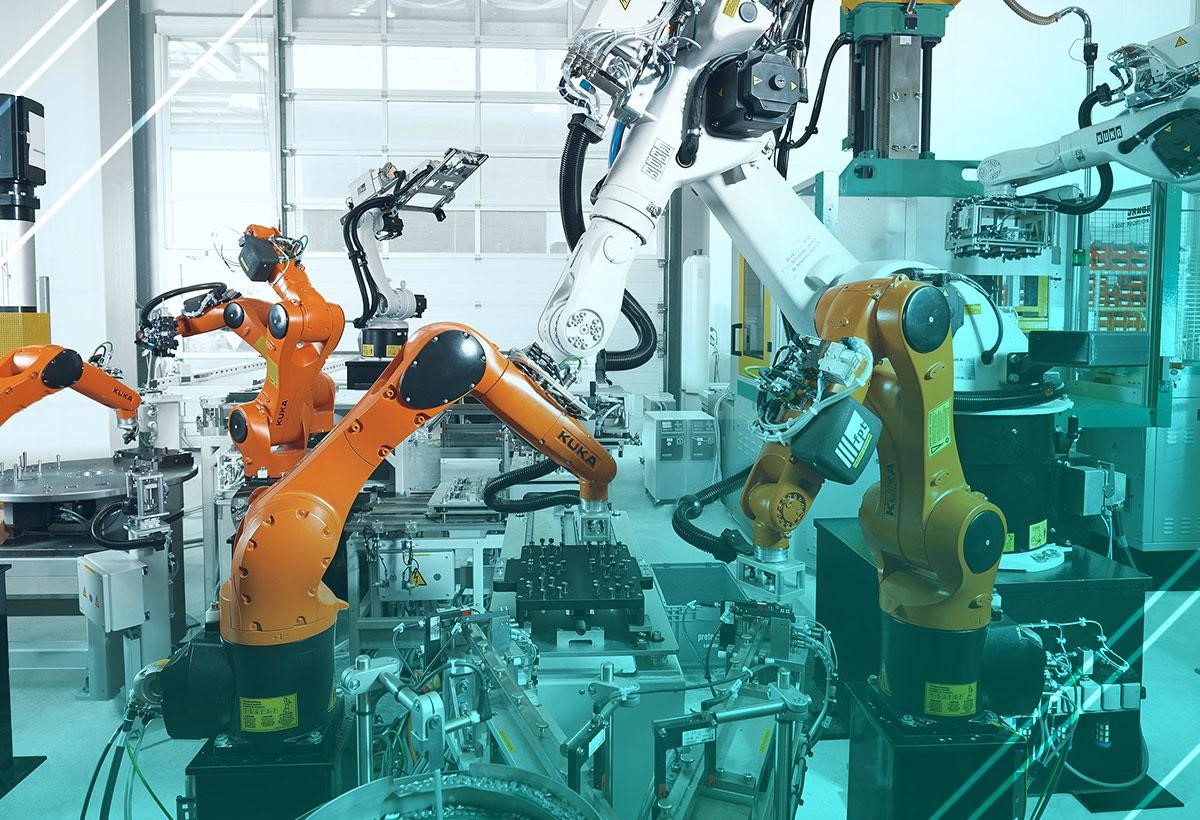Smart factories are the result of Industry 4.0. With technological advances, this concept now aims to optimize processes and integrate information. For the textile industry, as it has high demand, the advantages can be the difference in making the business even more competitive.
Therefore, in this content we will cover the model Smart Factory, the technologies and benefits behind automation. Check it out!
What is a smart factory?
Smart factories (or Smart Factory) It is the direct result of the Industry 4.0 concept. This is because the fourth industrial generation explains the relationship between man and the machine and addresses the use of technology as the main tool to optimize production in the sector, increase productivity and automate the industry.
Although Industry 5.0 is already a discussed concept, the fourth generation is still very present, as this was the first moment in which the technology became an important tool for factories. However, it is worth highlighting that personalization, an important feature of the fifth generation, is only possible thanks to the development of Smart Factories.
Consequently, smart factories are industries with a high level of digitalization that facilitate the collection of data and information through technological devices. This system values optimization as a solution to bring innovation, develop better answers to problems and meet new demands. Here, the objective is to bring more productivity, quality and flexibility to the service.
According to the study “Smart factories at scale”, this is a form of operation that has gained notoriety. The document points to information from almost 70% of manufacturers who are pursuing smart factory initiatives.
The study also states that “smart factories have the potential to add between $1.5 trillion to $2.2 trillion annually by 2023.”
These expectations only reinforce the idea that automation through digitalization will be increasingly present in manufacturing processes, given the fertility of the scenario and the need to meet the demands of the end consumer.
How does it work in practice?
To put this concept into practice in your industry, you need to adapt your business to the characteristics of this model. Here, the main objective is to redesign your production line to insert technological tools and machines.
In any case, the main characteristics are:
- Flexibility of installations;
- Agility in production;
- More efficient and safer processes;
- Data-based decision making;
- Smart solutions.
The tip is to adapt little by little. There are four levels surrounding this concept. And at each step, you can add changes to make your business smart. They are:
1 Available data
This is the level that most factories cover. This is because this is the stage relating to data accessibility. In this scenario you have the information, but it is not integrated and, consequently, it is spread across different channels and documents.
Here, the manual work of data collection is still very present, which hinders the productivity and efficiency of the processes.
2 Accessible data
This already corresponds to data integration, in which all information has already been collected and unified in a single location to facilitate accessibility for all responsible professionals.
At this stage, data is classified and structured to facilitate visualization, analysis and strategy creation with the help of digitalization. In the same way that indicators and reports are generated and managed with the support of technology.
3 Active data

This is, in fact, the moment when technologies become essential, after the escalation of the previous phase. Through artificial intelligence and machine learning, machines can generate ideas and identify problems and bottlenecks, as well as predict failures and errors.
4 Action-oriented data
This is the phase in which machines are already capable of solving problems found in the previous stage. The connection between machines allows changes to be made without human intervention.
The idea at this last level is to make your machines autonomous. However, there will still be a need for a large number of data for machine learning to occur, in increasingly deeper stages. Therefore, there is still a need for human monitoring.
What technologies are used?
As the central issue behind the concept behind Smart Factories is digitalization, it is therefore necessary to understand the main technologies that facilitate the application of this system.
Artificial intelligence
Artificial intelligence is the main concept in this model. This is because this is a technology inherited from Industry 4.0 with the aim of using it in software, devices and machines to stimulate the similarity of human reasoning capacity.
It is through this intelligence that machine learning occurs, enabling equipment to make decisions and solve problems.
It is worth highlighting that artificial intelligence can be applied to robotics to integrate and perform even better.
Internet of Things (IoT)
The Internet of Things is the technology that connects all devices and machines through the network. This is how information exchange and data integration occurs.
In short, this is the moment when the cyber-physical system happens. This means that the operation will integrate computing, communication and control with the help of network and physical processes.
Big Data
Big Data is the concept behind collecting and producing a large amount of data per second. It is with this possibility that the analysis of this information occurs to improve the efficiency of processes. This is the main way to optimize production.
Cloud computing
This amount of data needs to be somewhere easily accessible. And this is how the concept of cloud computing arises, which is the storage capacity of this information.
This is one of the main steps towards digitizing the stages, considering that there will no longer be physical files, only digital ones.
And with so much information in the cloud, it is necessary to invest in cybersecurity to prevent attacks and threats. Here, hardware and software are used for this purpose.
Autonomous robots
The use of robotics is connected to Artificial Intelligence. Robots are responsible for automating activities, making human use necessary only for management and monitoring.
However, even though there is the possibility of making them collaborative, the aim is to exercise the autonomy of the machines to increase productivity.
Digital and additive manufacturing

Digital manufacturing is integration, by computer. Here, simulations, 3D visualization with the help of augmented reality, analysis and definition of manufacturing processes take place. Everything digitally and with collaboration tools.
Additive is related to the manufacturing of parts using a digital design. In other words, 3D modeling software is used here to manufacture them with the help of a three-dimensional printer.
Benefits for the textile industry
The textile industry is a market that is constantly attentive to technological innovations to improve production stages and thus meet high consumer demand. So, this system tends to make the stages of the production line even easier.
Therefore, check out the benefits for textile factories below:
- Reduction of raw material waste;
- Molds made by software;
- Automated cutting process;
- Operational efficiency;
- Reduction of rework;
- Collection management;
- Increased profitability;
Invest in innovation and technology
The concept of smart factories addresses the importance of investing in innovation and technology to improve production, increase productivity and be more competitive in the market.
And if you want to understand more about the subject and even discover how to reduce costs along the way, download our guide for free.



